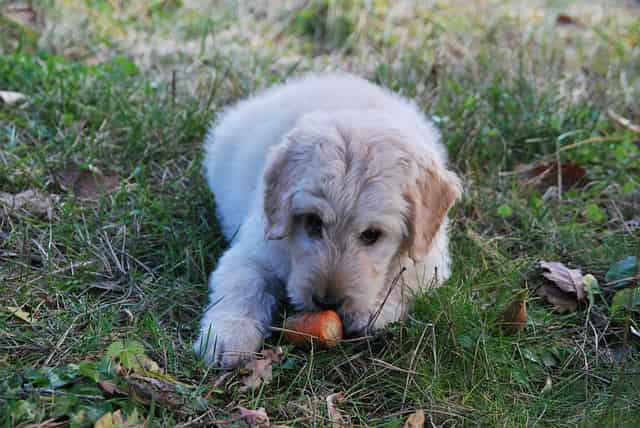
Dogs are known for their playful and mischievous nature, which can sometimes lead to them stealing objects that belong to their owners. One common item that dogs often take a liking to is shoes. However, many dog owners may be surprised to find that their furry friend is not actually interested in chewing on the shoes, but rather just carrying them around.
While it may seem strange that a dog would want to take a shoe without destroying it, there are actually several reasons why this behavior occurs. For one, dogs have a natural instinct to carry objects in their mouths, which stems from their days as wild animals. Additionally, shoes may have a strong scent that is appealing to a dog, as they use their sense of smell to explore and understand the world around them.
Why Do Dogs Steal Shoes?
Dogs are known to be curious creatures that love to explore their surroundings. One of the things that dogs are known to do is steal shoes. While some dogs may chew on the shoes they steal, others may not. This behavior can be frustrating for dog owners, but it is important to understand why dogs do it.
Natural Instincts
Dogs have natural instincts that drive their behavior. One of these instincts is to hunt and gather food. When dogs steal shoes, they may be satisfying this instinct. Shoes have a strong scent, which can be attractive to dogs. Dogs may also see shoes as a toy that they can play with.
Teething
Puppies go through a teething phase where they chew on everything they can get their teeth on. Shoes may be one of the things that puppies find appealing to chew on. As puppies grow older, they may stop chewing on shoes, but they may continue to steal them.
Boredom and Lack of Stimulation
Dogs need mental and physical stimulation to stay healthy and happy. When dogs are bored, they may turn to destructive behavior such as stealing shoes. Dogs that are left alone for long periods of time may also steal shoes as a way to cope with their loneliness.
Separation Anxiety
Dogs that suffer from separation anxiety may steal shoes as a way to comfort themselves. Shoes have a strong scent that may remind them of their owner, which can help to reduce their anxiety.
Why Don’t Dogs Chew Shoes?

Dogs have a natural instinct to chew on things, and shoes can be a tempting target. However, many dogs seem to prefer stealing shoes rather than chewing on them. This behavior can be frustrating for owners, but there are a few reasons why dogs might prefer to steal shoes instead of chewing them.
Training and Habits
One reason why dogs might not chew shoes is that they have been trained not to. If a dog has been taught from a young age that shoes are off-limits, they may be less likely to chew on them. Additionally, if a dog has plenty of appropriate chew toys and is trained to use them, they may be less likely to seek out other objects to chew on.
Another factor that can influence a dog’s behavior is their habits. If a dog is used to stealing shoes and not chewing on them, they may continue to do so out of habit. This behavior can be reinforced if the dog is rewarded in some way for stealing shoes, such as by receiving attention or treats.
Bitter Spray and Other Deterrents
Another reason why dogs might not chew shoes is that they are deterred by the taste or smell of the shoes. Some owners use bitter spray or other deterrents to discourage their dogs from chewing on shoes. These products are designed to taste or smell unpleasant to dogs, which can help to deter them from chewing on shoes or other objects.
However, it’s important to note that not all dogs will be deterred by these products. Some dogs may simply ignore the unpleasant taste or smell and continue to chew on shoes or other objects. Additionally, some owners may be hesitant to use these products due to concerns about their safety or effectiveness.
What Can You Do About It?

If your dog is stealing your shoes, there are several things you can do to discourage this behavior. Here are some tips to help you prevent your dog from stealing your shoes.
Provide Adequate Stimulation
One of the reasons why dogs steal shoes is because they are bored and looking for something to do. To prevent this, make sure your dog is getting enough exercise and mental stimulation. Take your dog for walks, play games with them, and provide them with interactive toys that will keep them occupied.
Create a Comfortable Environment
Another reason why dogs steal shoes is because they are seeking comfort. Make sure your dog has a comfortable bed to sleep in and a cozy spot to cuddle up in. This will help them feel more secure and less likely to seek comfort in your shoes.
Train Your Dog
Training your dog is essential in preventing them from stealing your shoes. Teach them basic commands such as “leave it” and “drop it.” Reward them when they follow your commands and provide them with positive reinforcement.
Conclusion
In conclusion, there are several reasons why a dog may steal their owner’s shoes but not chew them. It is important to note that each dog is unique and may have their own reasons for exhibiting this behavior.
















